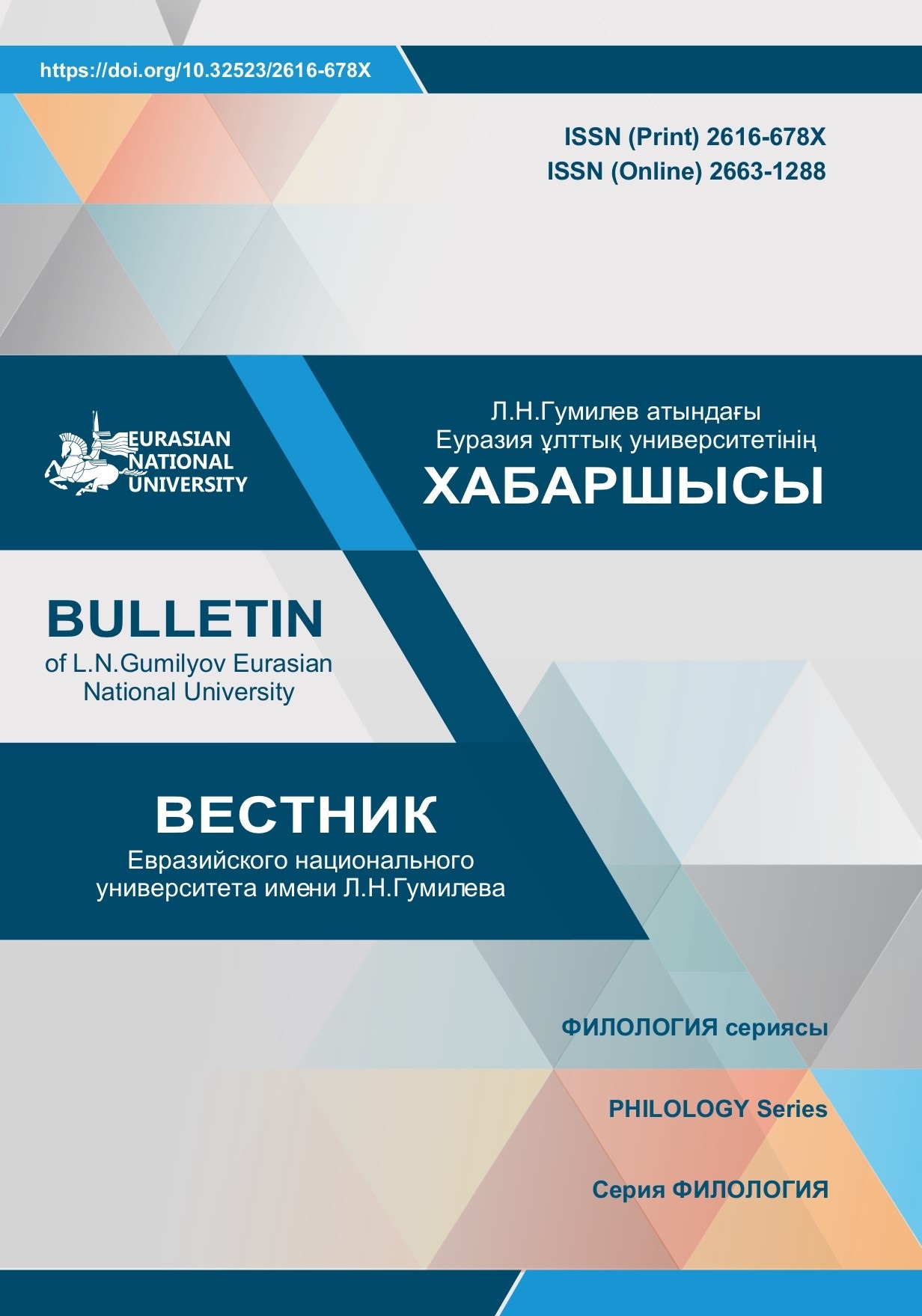Thematic groups of non-verbal means in the epic novel «The Path of Abai»
Views: 198 / PDF downloads: 219
DOI:
https://doi.org/10.32523/2616-678X-2024-147-2-97-107Keywords:
non-verbal means, lexico-semantics, “The Way of Abai”, communication, literary text, paralinguistics.Abstract
A distinctive position is held by the study of the language used in a work of fiction in
terms of its communicative and cognitive aspects, along with stylistic features. From this point of view, the study of the communicative nature of the writer’s language is inextricably linked to the problem of language communication. One of the linguistic techniques actively used in the author’s narrative in the text is non-verbal means, which serve to animating the portrait of the hero and making the communicative
act attractive to the reader,
The article considers the lexical and semantic classification of non-verbal means in the epic novel “The Path of Abai”. The purpose of the study is to identify through an artistic text the national specifics of the auxiliary means of communication characteristic of the Kazakh people, to determine the functions of non–
verbal components for the plot of the epic novel. When collecting non-verbal means from the epic novel, methods of systematization, sorting, as well as methods of typing, synthesis in classification into semantic groups were used. In determining the function of nonverbal components in context, methods of contextual
analysis and pragmatic stylistic analysis were also used.
The article provides an overview of previous research in the field of paralinguistics and explains the advantages of considering nonverbal components in the language of a work of art. The relevance of the research is manifested in the consideration of non-verbal components in the novel “The Way of Abai” by
M. Auezov in a communicative act, for the first time taking them into the subject of research. As a result of the study, six different lexical and semantic groups of non-verbal techniques semantically organizing the work representing the Kazakh culture of communication were identified. The findings of the article’s
research will serve as a valuable resource for those engaged in the study of paralinguistics, communicative linguistics and linguocognitology.







